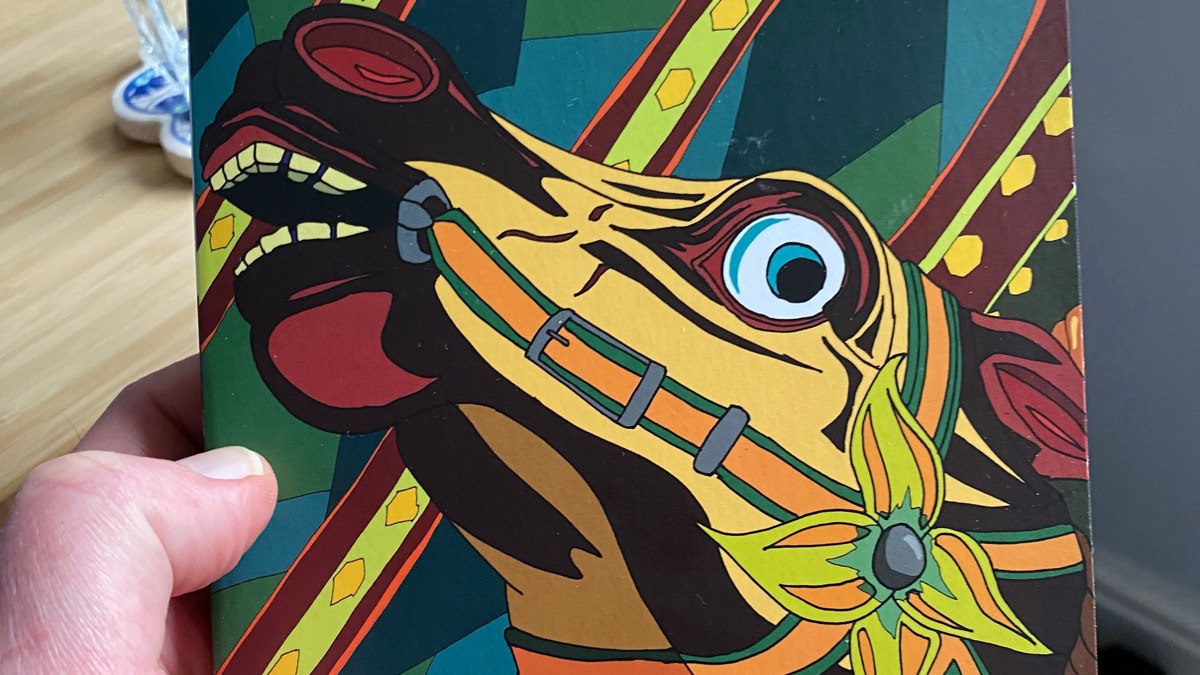
Something Wicked This Way Comes
I bought Something Wicked This Way Comes three years ago in a bookshop sale, in spite of the cover, which honestly put me off reading it for a long time. It showed a terrified, wide-eyed carousel horse looking down, about to trample the reader under its feet. When I did start to read it at the end of last year, I was surprised by the lyrical, slightly opaque language of the opening pages, and I put it down. It was so unlike the straightforward prose of Fahrenheit 451 (1953), I was disappointed.
I’d read Fahrenheit 451 three or four times over the years, but I didn’t know much about Ray Bradbury’s career or other works. I wondered what he’d written in the nine years between Fahrenheit 451 and Something Wicked This Way Comes (1962), and it turns out he tried to write a semi-autobiographical novel about his childhood, which became a short story collection, Dandelion Wine (1957), and he published other collections of stories he had written as a younger man in the 1940s. I’d like to read his biography, because reading behind the lines of Wikipedia, it looks like he spent most of the 1950s recycling older material for a new, much larger audience. He would have been in his thirties in that decade, and I wonder if he found that period frustrating.
(I’m possibly projecting. Megan Dunn writes brilliantly about her long relationship with Fahrenheit 451, and her own creative frustration in her memoir with Galley Beggar Press, Tinderbox (2017).)
Anyway, out of that decade, galloping out of the gate, or rather accelerating around the carousel, came Something Wicked This Way Comes. Bradbury had just entered his forties when this was published, and it gives a mostly-child’s-eye view of the arrival of an evil carnival in Green Town, Illinois.
A couple of weeks ago I decided to give it another go. I tweeted a picture of the cover, perhaps looking for some public accountability in making myself read what I knew was a classic, and I was thrilled by people’s replies with their own different-covered copies. Even in my small literary circle it was loved.
It’s a story about the perils of youthfulness and mid-life. Young teenagers Will Holloway and Jim Nightshade watch the Coogar and Dark carnival arrive in the middle of the night. In a series of breathlessly narrated, yet lyrically rich, set pieces, they see more of how the carnival works than they should and are hunted by carnival folk over a long late-October weekend. The carnival feeds on fear and pain, and tempts people with their deepest wishes. Only Will’s father, a janitor at the local library, himself full of doubt and regret, believes their story.
That accidentally reads a bit like blurb on a back cover, which is probably because I loved this book. The secret to getting into it was to read it fast and let the language pour over me, not sweating the sentences too much, and being carried along. Some scenes are all-time classics I’ll never forget — the boys hiding under the grill of the cigar store as the carnival marches through town; Mr Cooger being shocked under the policemen’s transfixed gazes; Mr Dark arriving at the library looking for the hiding boys.
Youth is hard, and getting old is harder. Every choice comes with a life not lived. My father was an older man, about Mr Holloway’s age when I was like Will, and now I am a father myself. This book hit home.